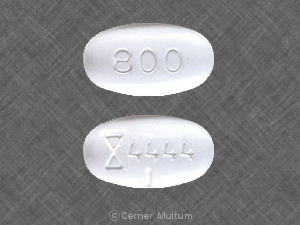Gabapentin is Offen Prescribed to Treat Restless Legs Syndrome (RLS)
Restless legs syndrome (RLS) symptoms include an unpleasant feeling or sensation when going to sleep and a strong urge to move.
Gabapentin can help alleviate the uncomfortable sensations and urge to move the legs that are characteristic of RLS.
How Gabapentin Works for RLS
- Gabapentin is an anticonvulsant and neuropathic pain medication. It’s thought to work by modulating neurotransmitters in the brain, especially those related to pain signaling and nerve activity.
- In the case of RLS, gabapentin appears to reduce nerve excitability and help normalize sensory signals, thereby decreasing the uncomfortable sensations in the legs.
Effectiveness of Gabapentin for RLS
- Studies have shown that gabapentin can reduce the frequency and intensity of RLS symptoms, improve sleep quality, and help patients fall asleep faster.
- It is particularly effective in individuals who have painful RLS or experience significant sleep disturbances due to the condition.
- Gabapentin enacarbil, a prodrug of gabapentin, is specifically approved by the FDA for the treatment of moderate to severe RLS. It is designed to have better absorption and more consistent blood levels than standard gabapentin.
Dosage for RLS
- The dosage of gabapentin for RLS can vary but is generally lower than dosages used for seizure control or neuropathic pain.
- Treatment often starts with a low dose (e.g., 100-300 mg) taken in the evening, about 2 hours before bedtime, and may be adjusted based on symptom severity and individual response.
- Gabapentin enacarbil is usually taken once daily, in the late afternoon or evening, as it has a longer duration of action.
Benefits of Using Gabapentin for RLS
- Improved Sleep: Gabapentin can improve sleep by reducing leg discomfort that tends to worsen at night.
- Less Dopamine-Related Side Effects: Unlike dopamine agonists (another common class of RLS medications), gabapentin does not typically cause issues like impulsive behavior or augmentation (a worsening of RLS symptoms over time).
- Pain Relief: It is particularly helpful for individuals who experience painful symptoms associated with RLS.
Potential Side Effects
- Drowsiness or Fatigue: Gabapentin can cause drowsiness, which might be beneficial for sleep disturbances but problematic during the day.
- Dizziness: Some individuals may experience dizziness, especially when starting the medication or adjusting the dosage.
- Weight Gain: In some cases, gabapentin can cause weight gain over time.
- Peripheral Edema: Swelling of the legs or ankles may occur.
- Coordination Issues: Gabapentin can cause mild coordination problems or a sense of unsteadiness.
Considerations Before Taking Gabapentin for RLS
- Discuss with Your Doctor: Ensure a thorough evaluation of your symptoms, medical history, and any other medications you are taking to avoid potential interactions.
- Titrate Slowly: Gabapentin should be started at a low dose and gradually increased to minimize side effects.
- Monitor Side Effects: Keep track of any new or unusual symptoms after starting the medication, and report them to your healthcare provider.
- Avoid Alcohol: Combining gabapentin with alcohol can increase drowsiness and other side effects.
- Not Suitable for Everyone: Gabapentin may not be appropriate for people with certain medical conditions, such as severe kidney impairment, without proper dose adjustments.
Alternative Treatments for RLS
If gabapentin is not effective or well-tolerated, there are other options for managing RLS, including:
- Dopamine Agonists: Such as pramipexole or ropinirole.
- Iron Supplements: If iron deficiency is present, iron supplementation can help alleviate symptoms.
- Lifestyle Changes: Regular exercise, good sleep hygiene, reducing caffeine, and stress management can help manage mild RLS symptoms.
- Other Medications: Opioids, benzodiazepines, or other anticonvulsants like pregabalin may be considered in certain cases.
 There are no cures for primary restless legs syndrome, or RLS, although various treatments often can help relieve symptoms. Treatment for secondary restless legs syndrome (RLS caused by another medical problem) involves treating the underlying cause.
There are no cures for primary restless legs syndrome, or RLS, although various treatments often can help relieve symptoms. Treatment for secondary restless legs syndrome (RLS caused by another medical problem) involves treating the underlying cause.
The following medications are the most widely prescribed to treat RLS. They may be given alone or, in certain cases, in combination. Your doctor will prescribe the best treatment plan for you.
- Dopamine agonists: These are most often the first medicines used to treat RLS. These drugs, including pramipexole (Mirapex),rotigotine (Neupro), and ropinirole (Requip), act like the neurotransmitter dopamine in the brain. Side effects include daytime sleepiness, nausea, and lightheadedness.
- Dopaminergic agents: These drugs, including Sinemet — a combination of levodopa and carbidopa — increase the level of dopamine in the brain and may improve leg sensations in RLS. However, they may cause a worsening of symptoms for some people after daily use. Side effects can also include nausea, vomiting, hallucinations, and involuntary movements (dyskinesias).
- Benzodiazepines: Benzodiazepines, such as alprazolam (Xanax),clonazepam (Klonopin), and temazepam (Restoril), are sedatives. They do not so much relieve symptoms as help you sleep through the symptoms.
- Opiates: These drugs are most often used to treat pain, but they can also relieve RLS symptoms. Because opiates are very addictive, they are usually used only when other drugs don’t work. Hydrocodone(Vicodin, Norco) is one example.
- Anticonvulsants: These agents, such as gabapentin (Neurontin) and gabapentin enacarbil (Horizant), may help relieve the symptoms of RLS as well as any chronic pain or nerve pain.
- Alpha2 agonists: These agents stimulate alpha2 receptors in thebrain stem. This activates nerve cells (neurons) that “turn down” the part of the nervous system that controls muscle involuntary movements and sensations. The drug clonidine (Catapres) is an example.